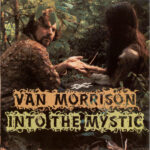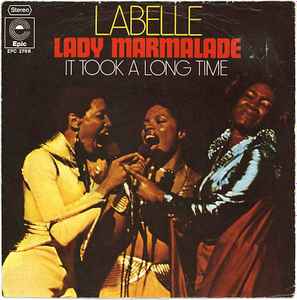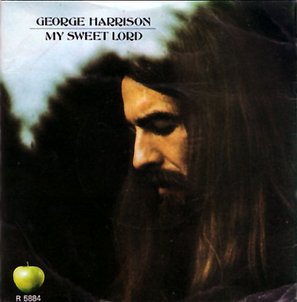 When Van Morrison released Moondance in February 1970, he was already recognized as one of the most distinctive voices in rock and soul. Yet few could have anticipated that this album—lush, romantic, and full of life—would contain a song as timeless and transcendent as “Into the Mystic.” Nestled among the jazzy grooves and upbeat melodies of the record, “Into the Mystic” stands as a quiet masterpiece: a spiritual sea shanty, a love ballad, and an existential meditation all at once. More than five decades later, the song remains one of Morrison’s most beloved creations, a track that speaks to the soul with a force that is at once deeply personal and universally human.
When Van Morrison released Moondance in February 1970, he was already recognized as one of the most distinctive voices in rock and soul. Yet few could have anticipated that this album—lush, romantic, and full of life—would contain a song as timeless and transcendent as “Into the Mystic.” Nestled among the jazzy grooves and upbeat melodies of the record, “Into the Mystic” stands as a quiet masterpiece: a spiritual sea shanty, a love ballad, and an existential meditation all at once. More than five decades later, the song remains one of Morrison’s most beloved creations, a track that speaks to the soul with a force that is at once deeply personal and universally human.
In this article, we’ll take a deep dive into the origins, musicality, lyrical richness, and lasting cultural impact of “Into the Mystic,” exploring why it continues to resonate as one of the defining songs of Van Morrison’s extraordinary career.
The Birth of a Classic
By 1970, Van Morrison was coming off the creative breakthrough of Astral Weeks (1968), a record that would later be hailed as one of the greatest albums in rock history. Astral Weeks was a sweeping, impressionistic work that combined jazz, folk, and mystical poetry into a seamless whole. But despite its eventual critical acclaim, it was not a commercial hit, and Morrison found himself at a crossroads. He needed a follow-up that could capture the ethereal quality of Astral Weeks while appealing to a broader audience.
Enter Moondance, the album that would become his first real commercial success. Filled with warm, accessible songs like the swinging title track, the joyful “Crazy Love,” and the rollicking “Caravan,” it showcased Morrison’s ability to blend his Celtic soul roots with jazz, R&B, and pop influences. Yet amidst its bright rhythms and romantic grooves, “Into the Mystic” provided a moment of stillness and spiritual reflection.
Recorded in late 1969 at A&R Studios in New York City, the track emerged as one of the album’s most haunting and enduring statements. Produced by Morrison himself, it featured a small, intuitive band that included John Klingberg on bass, Jeff Labes on piano, and Jack Schroer on saxophone. Their subtle, restrained performance created the perfect backdrop for Morrison’s soulful vocals and poetic lyrics.
A Sound Like the Sea
“Into the Mystic” is often described as a “spiritual sea ballad,” and the music itself evokes the gentle ebb and flow of ocean waves. The song is in the key of E-flat major, with a lilting 6/8 time signature that gives it a waltz-like sway. From the very first strum of acoustic guitar, there’s a sense of movement and journey, as if the listener is boarding a ship bound for some distant horizon.
The arrangement is deceptively simple but full of depth. Klingberg’s bass provides a steady, undulating pulse, while Labes’s piano offers soft, rolling chords that mimic the rhythmic push and pull of the tide. Schroer’s saxophone enters at key moments, adding a plaintive, almost mournful counterpoint to Morrison’s voice. There’s no bombast, no overproduction—just a warm, organic sound that feels intimate and infinite at the same time.
Morrison’s vocal performance is the heart of the recording. His delivery is both passionate and restrained, a perfect embodiment of the song’s themes of longing and transcendence. He begins softly, almost conversationally, but builds to moments of near ecstasy, especially in the repeated refrain of “into the mystic.” There’s a sense that he is not just singing about a journey; he is taking it himself in real time.
Poetry of the Soul
The lyrics of “Into the Mystic” are among the most celebrated in Morrison’s catalog. At first glance, they describe a simple maritime voyage: “We were born before the wind / Also younger than the sun / Ere the bonnie boat was won as we sailed into the mystic.” But as with much of Morrison’s best work, the imagery operates on multiple levels.
On one hand, it is a love song, a promise of reunion with a beloved across the sea: “I wanna rock your gypsy soul / Just like way back in the days of old / Then magnificently we will float / Into the mystic.” The nautical metaphors—sailing, foghorns, the call of the sea—become symbols of eternal love, a force that transcends time and space.
On a deeper level, the song speaks to a spiritual journey, a return to the source. Morrison himself has said that he intended “Into the Mystic” to capture a sense of mystical homecoming, a voyage of the soul back to the divine. The foghorn, for example, can be read as a metaphor for the call of the spirit, guiding the traveler through the mists of life toward the ultimate destination.
This duality—romantic and metaphysical—is what gives the song its enduring power. It can be heard as a tender love ballad, a meditation on mortality, or a hymn to the infinite, depending on the listener’s own experiences and beliefs. Morrison’s genius lies in leaving the meaning open, allowing each person to find their own reflection in the music.
The Moondance Context
Within the broader context of Moondance, “Into the Mystic” plays a pivotal role. The album is often described as Morrison’s most accessible work, a collection of upbeat, jazz-inflected tunes that celebrate the joy of love and life. Tracks like “Moondance,” “And It Stoned Me,” and “Caravan” are filled with exuberance and earthly pleasure.
“Into the Mystic,” however, introduces a different dimension. Positioned near the end of the album, it serves as a spiritual counterweight to the more grounded songs, suggesting that beyond the joys of the material world lies a deeper, more mysterious truth. It is the moment when the dance floor gives way to the infinite, when the night sky opens and the soul takes flight.
Critics at the time recognized its unique power. Rolling Stone praised it as one of Morrison’s most moving compositions, highlighting its “haunting melody and mystical lyrics.” Over the years, it has come to be seen as one of the key tracks not only on Moondance but in Morrison’s entire career.
Live Magic
“Into the Mystic” has been a staple of Van Morrison’s live performances for decades, and each rendition brings new shades of meaning. Morrison is famously unpredictable on stage, often reworking arrangements and stretching songs into extended improvisations.
In concert, “Into the Mystic” often becomes a communal experience, with audiences swaying and singing along to the hypnotic refrain. The saxophone solos, sometimes replaced by guitar or harmonica, take on a life of their own, transforming the song into a kind of jazz prayer. Fans often describe the live version as a transcendent moment, a shared voyage where music and spirit become one.
Cultural Resonance
Over the past half-century, “Into the Mystic” has found a life far beyond the confines of Moondance. It has been featured in countless films and television shows, including Patch Adams, American Wedding, This Is Us, and Immediate Family, where its gentle yearning perfectly underscores moments of love, loss, and self-discovery.
Its presence in popular culture speaks to its universal appeal. Whether used to highlight a romantic reunion, a farewell, or a quiet moment of reflection, the song’s combination of warmth and mystery makes it an ideal soundtrack for the human experience.
The track has also been covered by a wide range of artists, from Pearl Jam to Zac Brown Band, each bringing their own interpretation to Morrison’s timeless melody. These versions, while varied, all pay tribute to the song’s unique ability to evoke both earthly passion and spiritual wonder.
Influence and Legacy
“Into the Mystic” has had a profound influence on generations of musicians and songwriters. Its seamless blend of folk, soul, and jazz helped pave the way for the singer-songwriter movement of the 1970s, inspiring artists like Jackson Browne, Bruce Springsteen, and David Gray. Its spiritual themes and open-ended poetry also anticipated the introspective, transcendental approach of later artists such as Jeff Buckley and Bon Iver.
For Morrison himself, the song represents a distillation of his lifelong quest to merge the sacred and the profane, the earthly and the divine. Throughout his career, he has returned again and again to themes of spiritual longing and mystical union, but rarely with the clarity and emotional resonance found here.
Why It Endures
More than fifty years after its release, “Into the Mystic” continues to cast a spell over listeners of all ages. Part of its power lies in its universality. We all, at some level, understand the longing it expresses—the desire to journey beyond the ordinary, to reconnect with something greater than ourselves. Whether that “something” is love, nature, God, or simply the mystery of existence, Morrison gives it voice in a way that feels both intimate and infinite.
The song’s gentle, organic sound also contributes to its timelessness. Unlike many recordings of its era, “Into the Mystic” does not feel tied to any particular trend or production style. Its acoustic instrumentation and soulful vocals could have been recorded yesterday or a hundred years ago, and it would still feel fresh and alive.
Above all, it endures because it speaks to the heart. Morrison’s invitation—“Come on girl… too late to stop now”—is not just to a lover, but to all of us. It is a call to embrace the journey, to surrender to the mystery, to sail bravely into the unknown.
Conclusion: Sailing On
“Into the Mystic” is more than a song. It is an experience, a meditation, a voyage. With its gentle sway, soulful melody, and poetic lyrics, it captures something essential about the human condition: our longing for connection, our awareness of mortality, and our enduring belief in something beyond the horizon.
Van Morrison has written many great songs, but few have matched the spiritual depth and universal appeal of this masterpiece. More than half a century after it first set sail, “Into the Mystic” continues to guide us, like a foghorn in the night, toward the eternal sea of love and mystery.


